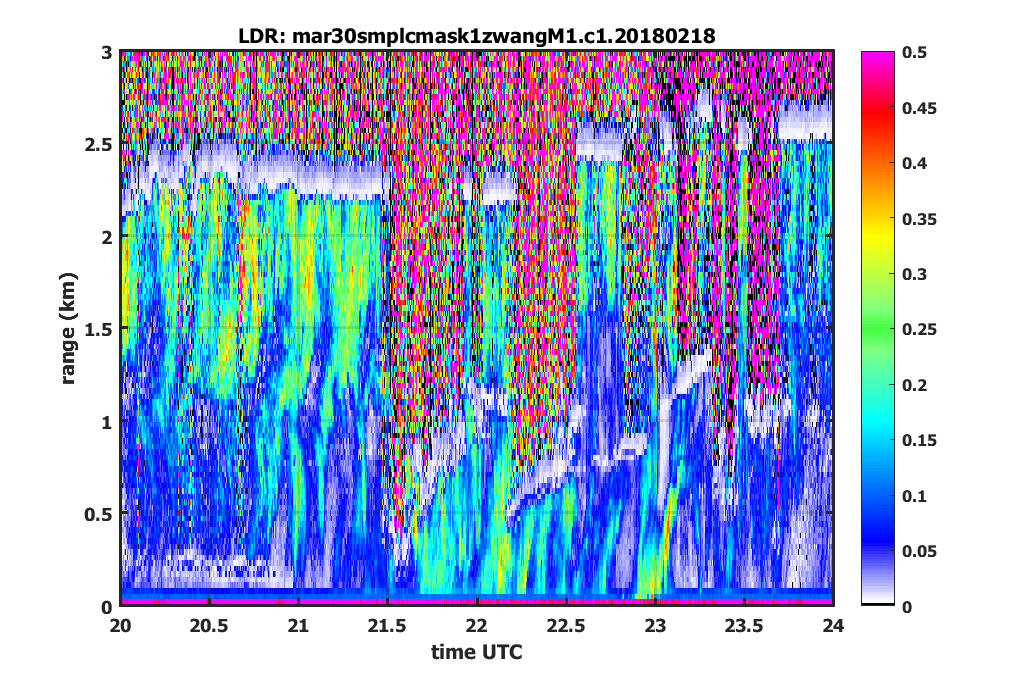MPLCMASK Evaluation Data Available for MARCUS Campaign
Published: 19 August 2019

An updated version of the Micropulse Lidar Cloud Mask (MPLCMASK) value-added product (VAP) provides cloud boundaries and linear depolarization ratio (LDR) for the Measurements of Aerosols, Radiation, and Clouds over the Southern Ocean (MARCUS) field campaign. Lidar cloud boundary data are useful for identifying cloud base height and cloud thickness in optically thin clouds.
The original MPLCMASK data product provides cloud base height, cloud top height, and backscatter coefficient for non-polarized micropulse lidar measurements. A depolarization ratio is computed for polarized and fast-switching micropulse lidar systems.
In addition to retrieving cloud boundaries above 500 meters, the MPLCMASK VAP applies lidar-specific corrections (i.e., range-square, background, deadtime, and overlap) to the measured backscattered lidar.
This version of MPLCMASK includes an improved application of the MPL instrument corrections and uses the MPL linear depolarization ratio developed by Flynn et al. (2007), rather than a straight ratio. Users can expect a significantly improved LDR field.
All available MARCUS data (in datastream mplpolfsM1.b1) have been processed using the updated VAP.
Scientists can begin using these evaluation data from the updated VAP now. Additional data may also become available in future releases of MPLCMASK.
To share your experience, or to ask questions, contact developer Chitra Sivaraman, assistant translator Donna Flynn, or MPL instrument mentor Paytsar Muradyan.
Access the data set in the ARM Data Center. (Go here to create an account to download the data.)
To cite the MPLCMASK data, please use doi:10.5439/1508389.
Reference: Flynn CJ, A Mendoza, Y Zheng, and S Mathur. 2007. “Novel polarization-sensitive micropulse lidar measurement technique.” Optics Express, 15(6), 10.1364/oe.15.002785.
Keep up with the Atmospheric Observer
Updates on ARM news, events, and opportunities delivered to your inbox
ARM User Profile
ARM welcomes users from all institutions and nations. A free ARM user account is needed to access ARM data.



















